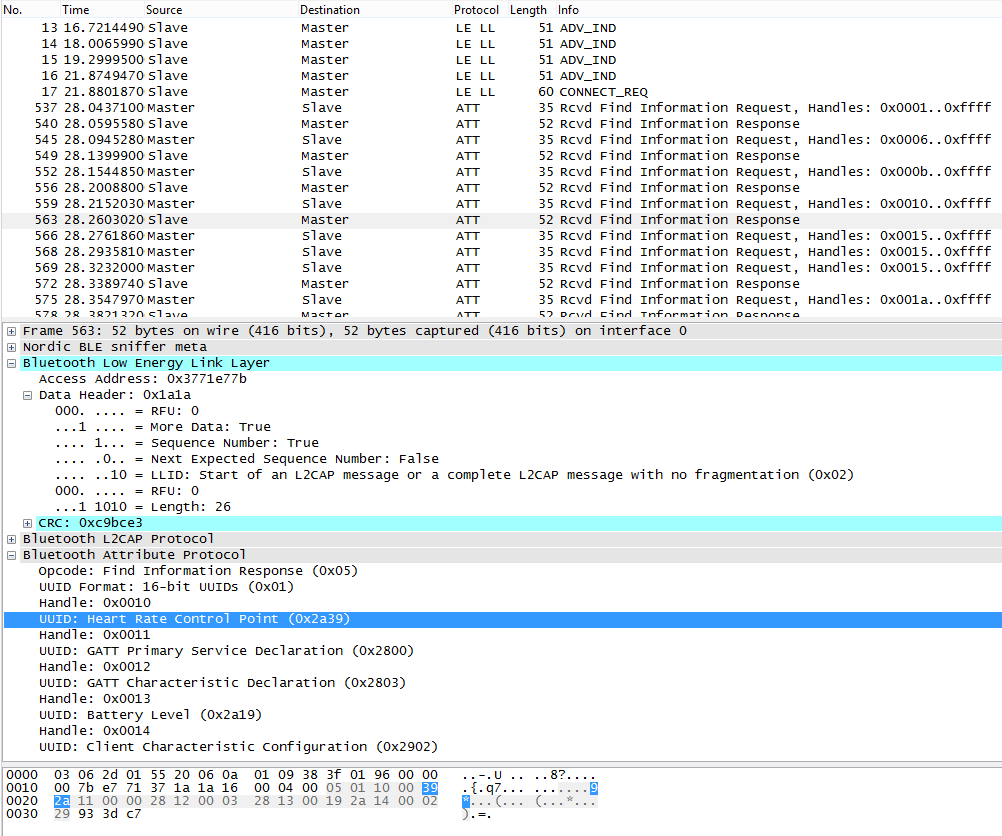I am trying to understand the operation between BLE device & android application... After "CONNECT_REQ", I can see several "SERVICE PROFILES" but I can't find those UUID in WireShark data. What I did is pressing buttons - Scan & Connect. Surely I can see ATT packet, but I didn't click any Service Profile yet.
When Android App got those UUID? I've checked HCI event log in Android system, but I couldn't find it well.




